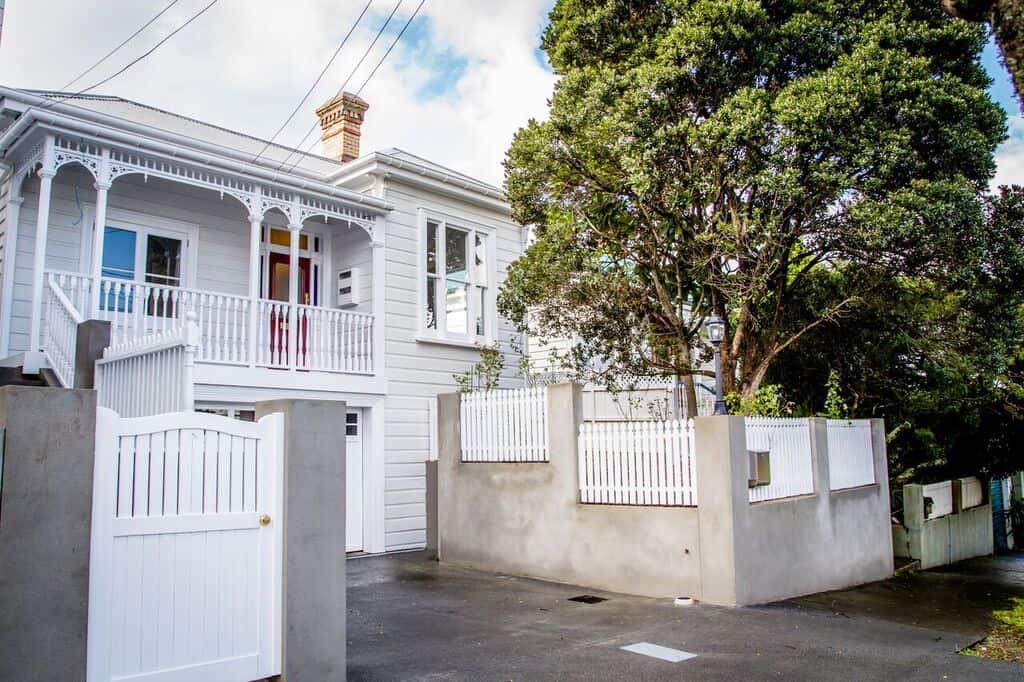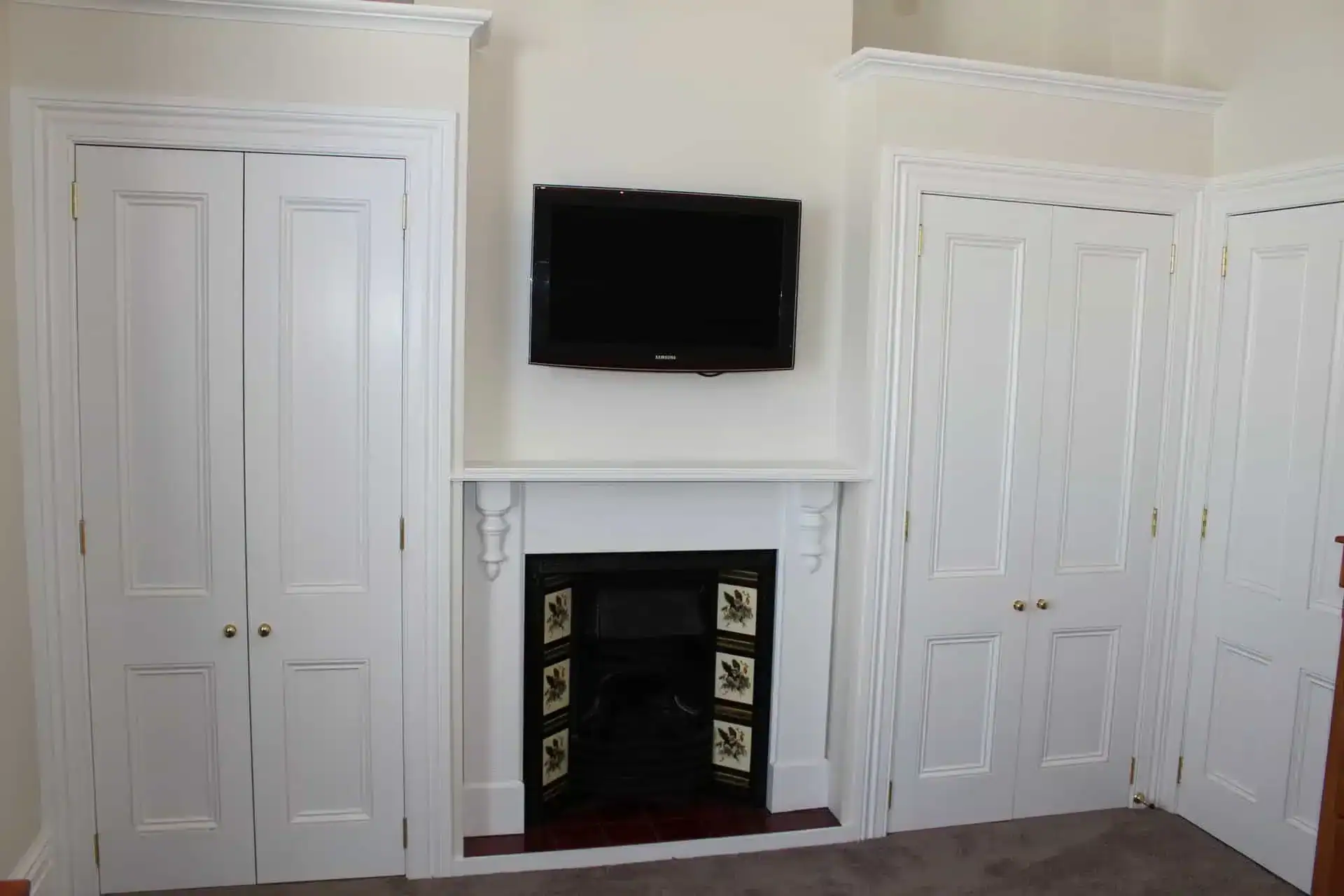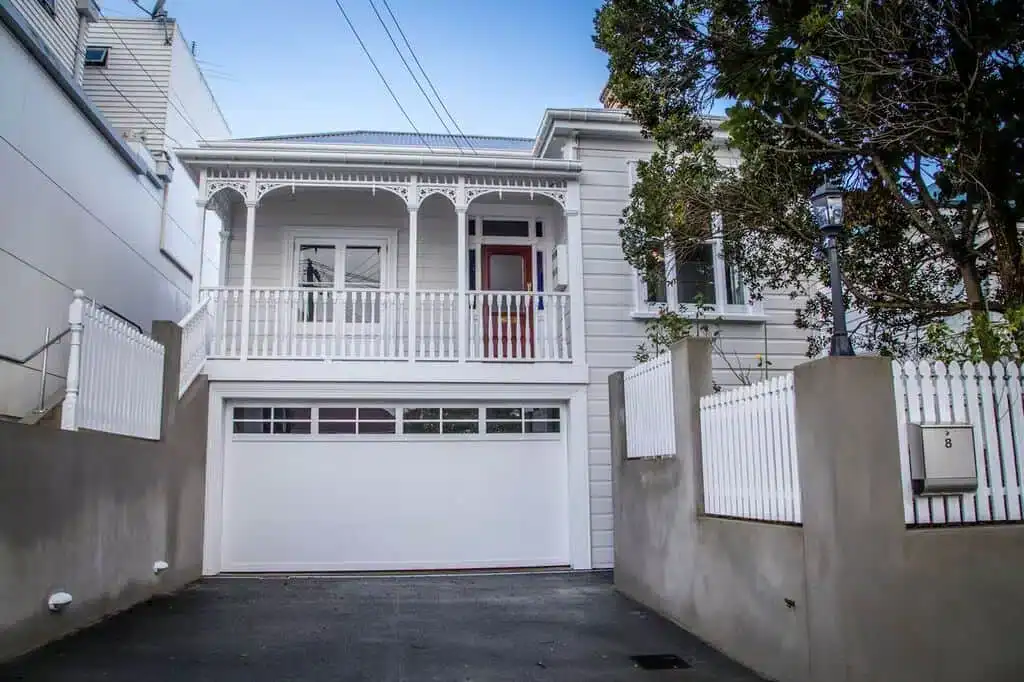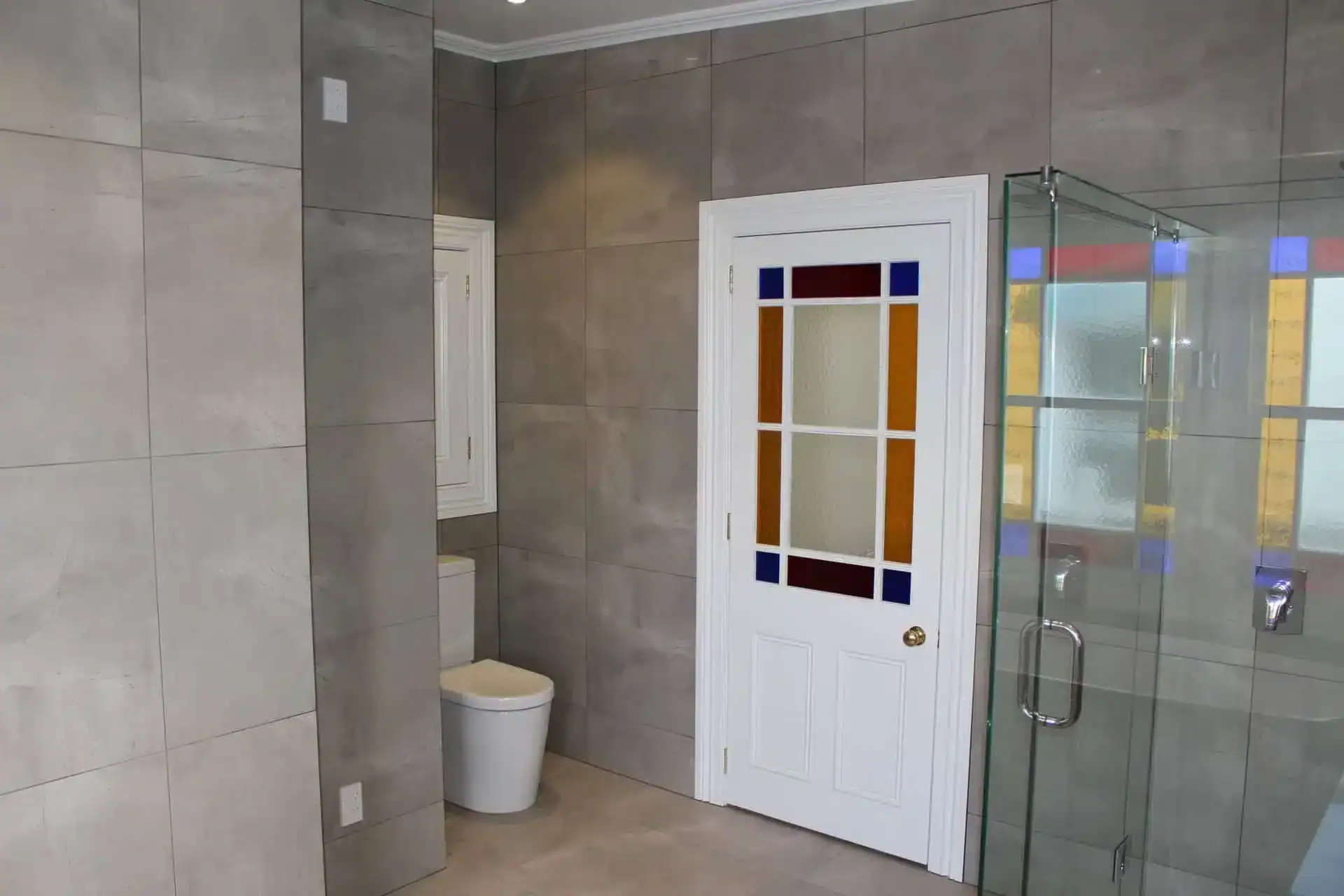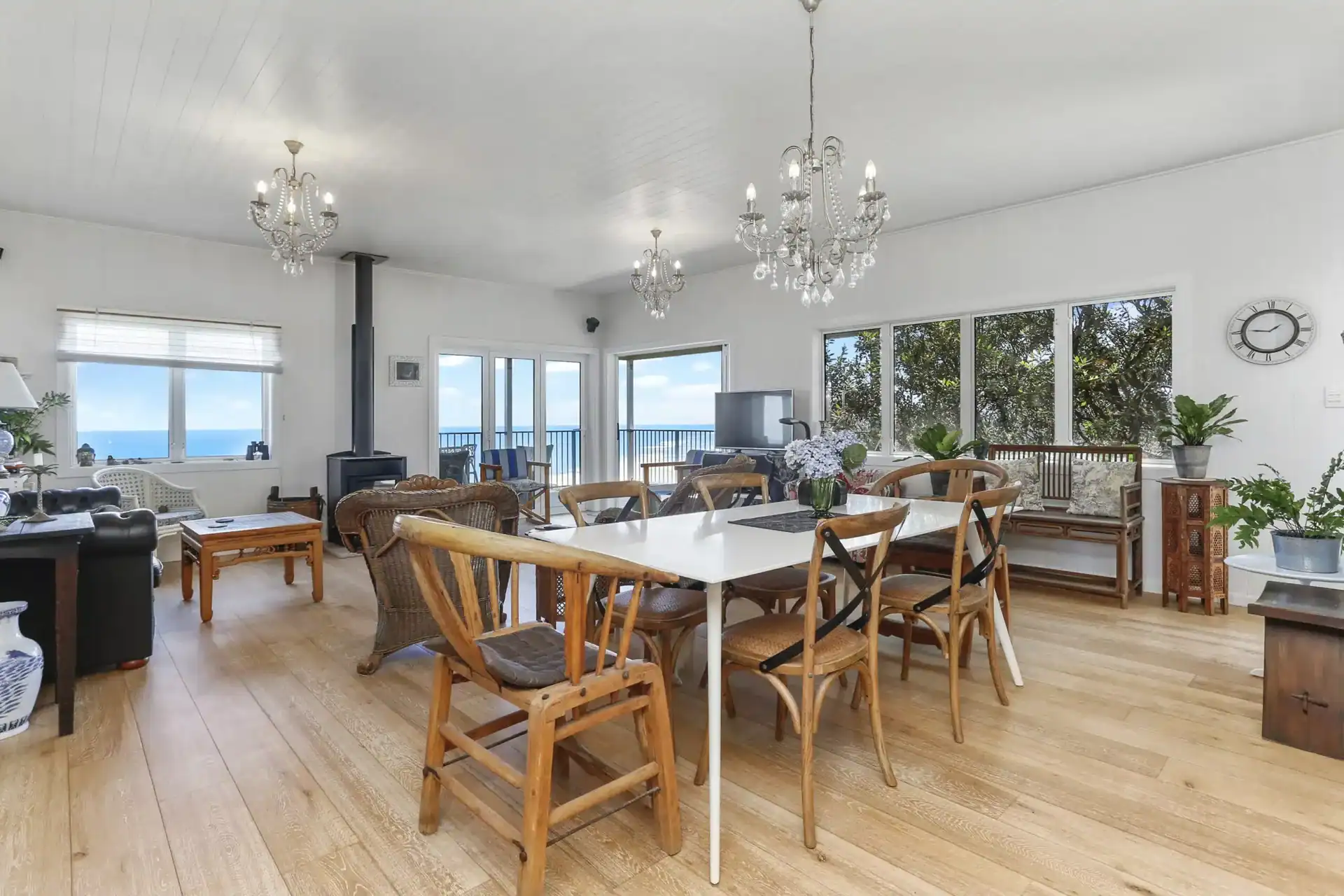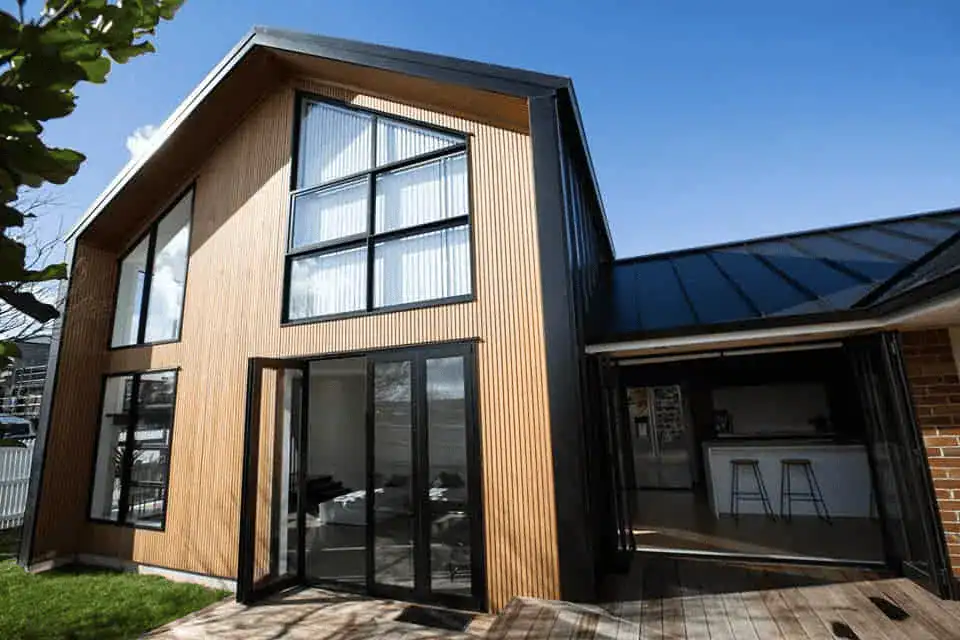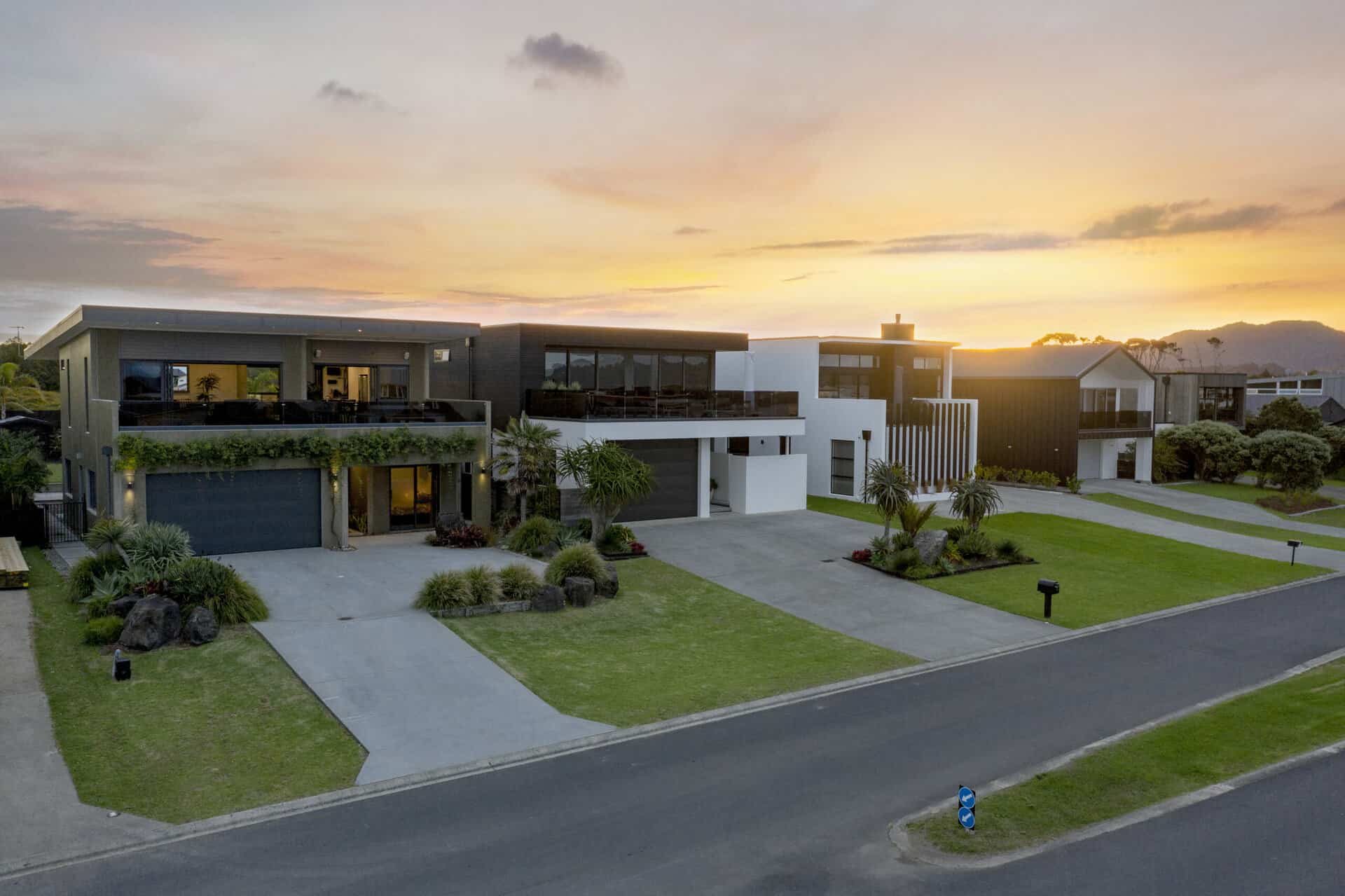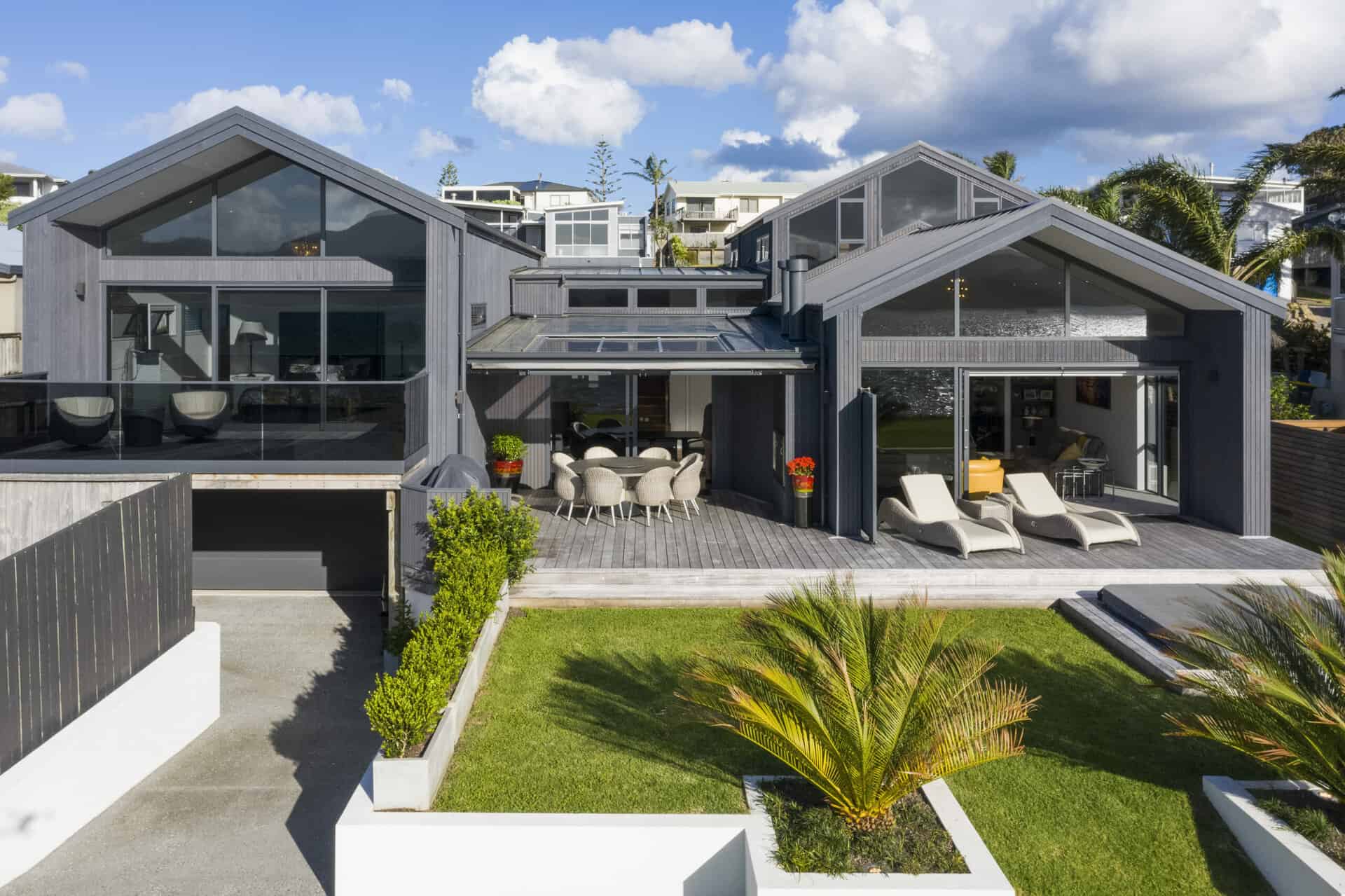Guide to classic home renovations
Thinking about updating your classic New Zealand villa or bungalow? These homes offer a wealth of history and style, but they might not fit with today’s lifestyle needs. Our guide to classic home renovation ensures you maintain the home’s charm while enhancing its practicality. Ready to get started?
Gain the insights needed to upgrade your historic home to suit modern living.
New Zealand’s architectural landscape is rich with classic villas and bungalows, each carrying a unique charm and history. Found mainly in established neighborhoods, these iconic homes often need careful renovations to align with modern living standards. This guide provides essential tips and knowledge for renovating your classic Kiwi home, ensuring you preserve its historical character while enhancing its functionality.
Overview of Villas and Bungalows
Villas and bungalows grace the streets of New Zealand’s towns and cities as iconic symbols of the nation’s architectural heritage. Built primarily between the 1880s and 1940s, these homes offer a glimpse into the past while serving as charming living spaces for modern families.
Villas, typically from the 1880s to 1910s, feature ornate wooden fretwork, high ceilings, and spacious rooms. You’ll recognize them by their symmetrical facades, bay windows, and wrap-around verandahs. Bungalows, popularized from the 1920s to 1940s, showcase lower-pitched roofs, wider eaves, and built-in furniture, known for their cozy, open-plan layouts and connection to outdoor spaces. Both styles are a testament to New Zealand’s architectural evolution, reflecting its colonial history and changing design preferences. As a homeowner, you are not just renovating a house but preserving a piece of national heritage.
Understanding these homes’ specific characteristics is crucial as you start your renovation, ensuring the charm is maintained during contemporary updates.
Purpose of the Guide
This guide aims to equip you with a structured approach to renovating your classic New Zealand villa or bungalow. Though such projects can be daunting, with the right knowledge and planning, you’ll be well-prepared for the challenges ahead. This comprehensive resource covers all renovation aspects for these iconic Kiwi homes, providing step-by-step guidance, expert advice, and practical tips.
The guide will help you:
- Grasp the unique characteristics of villas and bungalows
- Identify common renovation challenges and solutions
- Navigate building codes and consent processes
- Make informed decisions about materials and design choices
Architectural Context
New Zealand’s architectural landscape is a testament to its unique colonial history and indigenous influences. Classic Kiwi homes reflect a blend of British, Maori, and Pacific Island design elements, evident in styles ranging from Victorian villas to mid-century bungalows. Key features such as steep-pitched roofs, bay windows, ornate verandas, and native timber construction are crucial considerations in your renovation project. These elements showcase the cultural tapestry and building traditions that have shaped New Zealand’s residential architecture over the years.
Historical Background
New Zealand’s villa and bungalow designs are shaped by a distinctive blend of cultural influences, forming a uniquely Kiwi architectural identity:
Villas:
- Introduced in the late 19th century.
- Inspired by British and Australian designs.
- Adapted to local conditions over time.
Bungalows:
- Gained popularity in the early 20th century.
- Offered a more relaxed and informal living style.
These designs are influenced by multiple cultural elements, including:
- Maori architectural traditions, especially in roof forms and decorative elements.
- Pacific Island motifs and materials, prominent in coastal areas.
- Art Deco and modernist movements of the 1920s and 1930s.
- Post-war functionalism, contributing to more open living spaces.
Understanding this historical context is crucial for meaningful classic home renovations, ensuring preservation of unique character while integrating modern needs.
Key Architectural Features
New Zealand’s classic homes are distinguished by several unique architectural features:
Verandas:
- Serve as a hallmark of these dwellings.
- Provide a sheltered outdoor space connecting the interior with the surrounding landscape.
- Offer protection from the elements and an inviting area for relaxation and socializing.
Decorative Details:
- Include ornate fretwork, carved brackets, and elegant finials.
- Add character and visual interest to the exterior.
Bay Windows:
- Allow natural light to flood the interior.
- Create cozy nooks for reading or enjoying views.
Interior Features:
- High Ceilings: Often adorned with decorative plasterwork or wooden beams.
- Fireplaces: Act as focal points in living areas with ornate mantels and surrounds.
- Timber Flooring and Wood Paneling: Enhance the warm, inviting atmosphere unique to these homes.
Understanding these architectural features can guide your renovation decisions, helping to maintain the home’s classic charm while introducing modern comforts.
Planning Your Renovation
Before starting your classic home renovation in New Zealand, conduct an initial assessment of your property’s current condition and potential. This evaluation will identify structural issues, architectural features worth preserving, and areas needing significant updates. Once you have this information, set clear goals for your renovation project. Consider factors such as budget, timeline, desired aesthetic, and functionality improvements you wish to achieve.
Initial Assessment
A thorough initial assessment is crucial for any successful classic home renovation in New Zealand. Conduct a detailed inspection of your property, focusing on both structural integrity and historical features to understand the project scope and identify potential challenges.
Key areas to examine include:
- Foundation and Structural Framework: Check for stability and integrity.
- Roof Condition and Materials: Inspect for wear and necessary repairs.
- Electrical and Plumbing Systems: Assess for outdated or unsafe elements.
- Original Architectural Elements: Identify which features to preserve.
During your assessment, pay attention to signs of wear, damage, or previous modifications that could impact your renovation plans. Take detailed notes and photographs for documentation. Consult with experts such as structural engineers or heritage consultants for specialized assessments and insights into your home’s unique aspects. Completing a detailed initial assessment aids effective planning and ensures the preservation of your property’s character and integrity throughout the renovation process.
Goal Setting
With a thorough assessment complete, it’s time to set clear goals for your classic home renovation in New Zealand. This step ensures the project meets your desired outcomes.
Define Objectives:
- Establish aesthetic and functional goals.
- Reflect personal style and New Zealand architecture’s unique characteristics.
Prioritise Renovations:
- Focus on improvements that enhance daily life while honoring classic elements.
- Consider how each space is used and what changes have the most impact.
Examples of Needs:
- A more open-plan living area for entertainment.
- An updated kitchen that embraces indoor-outdoor flow popular in Kiwi homes.
By setting clear, prioritised goals, you create a roadmap for renovation that aligns with your vision, budget, and timeline. This approach helps in making informed decisions throughout the process, ensuring a successful transformation of your classic New Zealand home.
Budgeting Effectively
Budgeting for your classic home renovation in New Zealand requires focusing on cost estimation and financial strategies. Start by researching current market prices for materials and labour, and then create a detailed breakdown of expected expenses for each aspect of your renovation project. Once you have a thorough cost estimate, explore various financial options to ensure you have the funds needed to complete your renovation. Consider options such as home improvement loans, personal savings, or refinancing your mortgage.
Cost Estimation
Accurate cost estimation is crucial for effective budgeting in your classic home renovation in New Zealand. Typically, renovation expenses fall into three main categories: labour, materials, and permits.
- Labour Costs: Often the largest portion of your budget, covering skilled tradespeople and contractors.
- Materials: Costs can vary widely depending on quality and style.
- Permits: Necessary for most significant renovations, generally making up 5-10% of the budget.
For a clearer picture of potential expenses, consider that labour costs usually range from 40-60% of your total budget, while materials typically account for 30-50%. Always include a contingency fund of 10-20% to cover unexpected costs.
Financial Strategies
Implementing effective financial strategies is key to managing your classic home renovation budget in New Zealand. Start by creating a detailed budget that accounts for all expected costs, including materials, labour, permits, and a contingency fund for unexpected expenses, typically 10-20% of the total budget.
Separate Account:
- Open a dedicated bank account for your renovation project to keep track of expenses and avoid mixing with daily costs.
- Set up automatic transfers to build the renovation fund over time.
Financing Options:
- Consider home equity loans or personal loans to supplement savings if needed.
- Compare interest rates and terms to find the best deal.
- Expense Management:
- Keep meticulous records of all expenses and regularly review your budget.
- Adjust plans if overspending occurs, identifying areas to cut costs without compromising quality.
Post-Renovation Costs:
- Factor in potential increases in home insurance premiums and property taxes.
By implementing these strategies, you’ll be better equipped to manage finances effectively and complete your classic home renovation successfully.
Navigating Permits and Regulations
Renovating a classic home in New Zealand involves navigating a complex set of permits and regulations. It’s essential to familiarise yourself with local building codes, which dictate safety standards, structural requirements, and acceptable materials for your project. If your property holds heritage status, additional considerations apply, including restrictions on alterations to preserve historical features and the need for specialised approvals.
Understanding Local Building Codes
Understanding local building codes is crucial for ensuring the success and compliance of your classic home renovation in New Zealand. Familiarise yourself with the Building Act 2004 and the Building Code, which set the standards for all construction work in the country.
Key aspects to consider include:
- Structural Integrity Requirements: Ensure stability and safety.
- Fire Safety Regulations: Meet essential safety standards.
- Energy Efficiency Standards: Incorporate sustainable practices.
- Accessibility Provisions: Provide necessary accommodations.
Your local council is the primary authority for enforcing building codes and issuing consents, so they will review your plans to ensure they meet all necessary standards. Keep in mind that different regions may have additional requirements based on factors like climate, seismic activity, or heritage considerations.
Engage with a licensed building practitioner familiar with local codes. They can guide you through the process and help avoid costly mistakes and delays. Understanding and adhering to local codes not only complies with the law but also ensures the safety, comfort, and longevity of your classic home renovation.
Heritage Considerations
Renovating a heritage-listed property in New Zealand adds complexity due to specific regulations aimed at preserving historical and cultural significance. Familiarise yourself with local heritage protection laws, which often restrict exterior changes and may limit interior modifications. Special permits and approvals from your local council’s heritage department are typically required before beginning any work.
- Maintain Original Character: Use materials and techniques consistent with the building’s historical period.
- Specialised Contractors: Work with contractors experienced in heritage renovations to ensure compliance with regulations.
Understanding and adhering to these heritage considerations helps maintain the integrity and authenticity of your classic home while navigating the necessary regulatory landscape.
Engaging Qualified Professionals
Hiring qualified professionals is crucial for your classic home renovation in New Zealand. Carefully select a team that includes architects, builders, and specialised tradespeople with expertise in heritage properties and local building codes.
- Team Selection: Choose professionals with experience in heritage renovations and an understanding of local codes.
- Project Management Essentials: Ensure clear communication, establish detailed contracts, and hold regular progress meetings to keep the renovation on track and within budget.
Selecting the right professionals and maintaining strong project management practices are essential to achieving a successful renovation outcome.
Selecting the Right Team
Choosing the right team is crucial for classic home renovations in New Zealand. When selecting architects, builders, and designers for your heritage project, ensure they have the necessary experience and expertise. Seek professionals who:
- Have a proven track record with heritage renovations.
- Understand local building codes and heritage regulations.
- Possess knowledge of traditional construction techniques.
- Demonstrate a passion for preserving historical elements.
Thoroughly research potential team members by reviewing portfolios, speaking with past clients, and asking for references and examples of their work on similar projects. It’s important to find professionals who share your vision for maintaining the integrity of your classic home while incorporating modern amenities.
Project Management Essentials
Effective project management is crucial for successful classic home renovations in New Zealand.
Key aspects include:
- Detailed Timeline: Create a timeline that outlines each phase of the renovation and set realistic deadlines to stay on track.
- Clear Communication: Establish clear channels with your team, including contractors, designers, and suppliers. Regular meetings and updates ensure everyone is aligned and informed.
- Expense Tracking and Budget Management: Implement a system for tracking expenses and managing your budget, helping avoid cost overruns and enabling informed decision-making.
- Risk Management: Identify potential challenges and develop contingency plans to address them, preparing you for unexpected setbacks.
Effective project management fosters a cohesive team environment, enabling everyone to work together towards the successful completion of your classic home renovation.
Design Considerations
Renovating your classic New Zealand home involves careful planning around both interior design strategies and exterior enhancements.
- Interior Design: Focus on preserving original features while incorporating modern comforts and functionality. Balance historical aesthetics with contemporary living needs.
- Exterior Enhancements: Maintain the home’s historic character while addressing practical requirements such as weatherproofing and energy efficiency. Ensure that modern updates complement the original design elements to preserve the architectural integrity.
Interior Design Strategies
Balancing modern functionality with historical aesthetics is essential for classic New Zealand homes. Carefully select materials, colours, and fixtures that enhance your home’s character while incorporating modern conveniences. This approach preserves your property’s unique charm while meeting contemporary living standards.
Key elements to consider in your interior design strategy include:
- Colour Palette: Choose hues that complement the home’s original features.
- Lighting: Blend period-appropriate fixtures with modern, energy-efficient options.
- Furniture: Mix vintage pieces with contemporary items for a cohesive look.
- Textures: Incorporate materials that reflect the home’s era and New Zealand’s cultural heritage.
Exterior Enhancements
Balancing the preservation of a classic New Zealand home’s exterior with modern updates involves careful planning. Maintain the property’s curb appeal while adding contemporary elements to enhance functionality and aesthetics. Start by assessing existing architectural features that give your home its unique character, such as ornate trim, period-specific windows, or distinctive rooflines.
- Subtle Modernisation: Focus on improvements that complement the original design. Update exterior paint with historically accurate colours using modern, weather-resistant formulations. Replace outdated fixtures with energy-efficient alternatives that mimic traditional styles.
- Landscaping: Use native plants that fit both the home’s era and today’s environmental practices.
- Outdoor Living Spaces: Add a deck or patio that blends with the home’s architecture, using materials that echo the original construction. Incorporate modern conveniences like outdoor lighting and heating discreetly.
By thoughtfully combining classic elements with contemporary updates, you can create an exterior that respects your home’s heritage while meeting current needs and enhancing its overall value.
Structural Modifications
When making structural modifications to classic New Zealand homes, it’s crucial to assess the building’s existing framework thoroughly. Identify areas that require reinforcement or alteration. The integration of modern systems, like updated electrical wiring, plumbing, and HVAC, should be done without compromising the historical integrity of the structure. Working with experienced professionals who are knowledgeable in both heritage construction techniques and current building codes is essential to ensure your renovations are safe, compliant, and respectful of the home’s original character.
Identifying Structural Needs
Before undertaking structural modifications on your classic New Zealand home, it’s important to identify key structural needs. As a homeowner of a villa or bungalow, preserving the historical significance while addressing modern requirements is essential.
Consider the following aspects to determine your home’s structural needs:
- Layout Issues: Address indoor-outdoor flow to improve spatial dynamics.
- Natural Light: Increase light to enhance brightness and energy efficiency.
- Expansion Requirements: Focus on kitchen and outdoor area expansions as needed.
- Preservation: Maintain original features like mouldings and native timber floors.
Collaborate with experienced professionals who understand the unique challenges of period home extensions. They can help blend traditional and modern design elements while respecting your property’s heritage. By identifying structural needs early, you can effectively create a home that honours its past and accommodates your modern lifestyle requirements.
Modern Systems Integration
After identifying your home’s structural needs, integrating modern systems is crucial for enhancing comfort and efficiency while preserving architectural integrity. Upgrading plumbing, electrical systems, and insulation should be approached with care to maintain the unique character of classic New Zealand homes.
- Evaluate Current Systems: Consult licensed professionals to determine necessary upgrades while ensuring your home’s character remains intact.
- Plumbing: Replace old pipes with modern materials that reduce leaks and corrosion risk.
- Electrical Systems: Focus on increasing capacity and safety, concealing wiring within walls or floors where possible.
- Insulation: Opt for solutions like blown-in insulation for walls and spray foam for attics that do not alter visible structures. Enhance thermal performance with double-glazing and weatherstripping for windows and doors.
Careful integration of modern systems ensures improved functionality without compromising your home’s historical essence.
Common Pitfalls to Avoid
Renovating classic New Zealand homes requires awareness of common mistakes that can disrupt your project. Identifying these pitfalls early can save time, money, and frustration during the renovation process.
Key areas to watch include:
- Cost Underestimation: Ensure accurate budgeting and include a contingency for unforeseen expenses.
- Overlooking Local Building Codes: Familiarise yourself with local regulations to avoid legal and compliance issues.
- Neglecting Historical Elements: Preserve original features to maintain your home’s character.
- Hiring Inadequate Professionals: Choose experienced professionals who understand the nuances of classic home renovation.
Recognising these potential errors allows for better planning and outcomes in your classic home restoration.
Identifying Common Mistakes
In the renovation process, homeowners often encounter common issues that can derail projects. Identifying these mistakes early is crucial to ensure a smooth and successful transformation of your classic New Zealand home.
- Underestimating Scope and Budget: Avoid unexpected costs or timeline extensions by meticulous planning.
- Neglecting Permits and Consents: Ensure all necessary permits are obtained to prevent legal complications and costly corrections.
- Choosing the Wrong Contractors: Select experienced professionals and avoid attempting DIY projects beyond your skill level.
- Ignoring Original Character: Preserve the home’s character and avoid incompatible design choices that detract from its historical essence.
- Overlooking Structural Issues: Address structural concerns rather than focusing solely on cosmetic upgrades.
- Forgetting Long-term Maintenance and Efficiency: Consider the long-term care and energy efficiency of your renovations.
Awareness of these common pitfalls can help you plan more effectively and achieve better results in your home restoration.
Frequently Asked Questions
Conclusion
You now have the essential knowledge to navigate a classic home renovation in New Zealand effectively. Success lies in meticulous planning, respecting architectural heritage, and engaging skilled professionals. From setting clear goals and budgeting accurately to integrating modern systems while preserving historical elements, each step is vital. Avoid common pitfalls by staying informed and choosing the right team to guide your project.
At Best Nest Building, we are your trusted contractor for villa and bungalow renovations in New Zealand, bringing expertise, a passion for preserving historical charm, and a commitment to quality in every project. Want to see your renovation vision come to life? Contact us today to start the journey towards your dream home.


